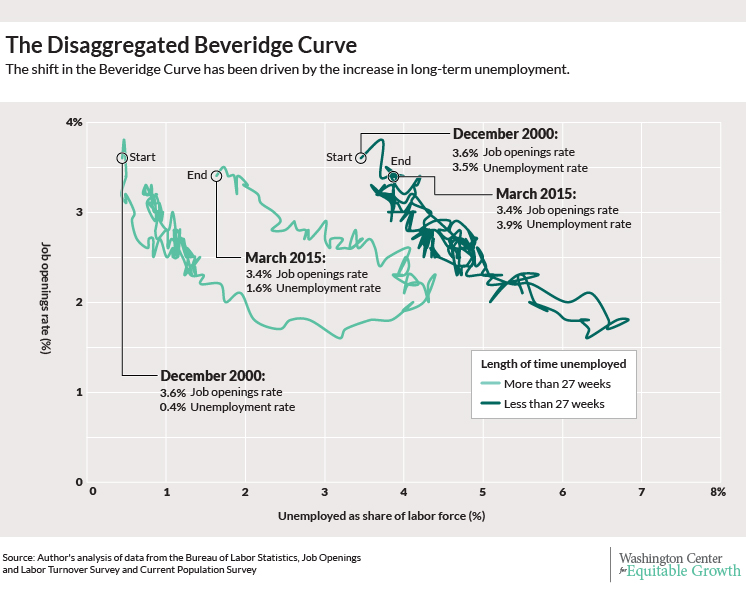It seems to me that this is likely to be analytically wrong–or, at least, far from the optimal policy under any expections scenario:
Janet Yellen: The Outlook for the Economy–May 22, 2015: “Given this economic outlook and the attendant uncertainty…
…how is monetary policy likely to evolve over the next few years? Because of the substantial lags in the effects of monetary policy on the economy, we must make policy in a forward-looking manner. Delaying action to tighten monetary policy until employment and inflation are already back to our objectives would risk overheating the economy. For this reason, if the economy continues to improve as I expect, I think it will be appropriate at some point this year to take the initial step to raise the federal funds rate target and begin the process of normalizing monetary policy. To support taking this step, however, I will need to see continued improvement in labor market conditions, and I will need to be reasonably confident that inflation will move back to 2 percent over the medium term.
After we begin raising the federal funds rate, I anticipate that the pace of normalization is likely to be gradual. The various headwinds that are still restraining the economy, as I said, will likely take some time to fully abate, and the pace of that improvement is highly uncertain. If conditions develop as my colleagues and I expect, then the FOMC’s objectives of maximum employment and price stability would best be achieved by proceeding cautiously, which I expect would mean that it will be several years before the federal funds rate would be back to its normal, longer-run level…
It is one of Herbert Simon’s principles that one should model the most striking features of a situation, take the model as your guide, solve for the optimal policy for your oversimplified model, and then hope that the optimal solution to the oversimplified model is a good solution to the real world policy problem.
In the case of the Federal Reserve, the natural way to model it’s task is as an optimal control problem. In such a problem, the optimal path for your control–which is, in this case, the short-term safe nominal interest rate that the Federal Reserve sets–is one in which it is expected to drift up or down only slowly. And whenever new information arrives, the optimal policy is for the control path to jump until once again the control variable is at a level at which you expect it to drift one way or the other only slowly.
All this is true assuming that one can either lay raise or lower one’s control variable as one wishes.
If your control variable has a bound–like the zero lower bound on interest rates–the optimal control policy is different. The fact that you cannot lower your control variable below its bound adds an extra term to the math. This extra term makes it unpleasant to be even near the bound. So you should take steps to stay away from it–which means lowering your control variable closer to the bound as you get near it. And the nearer to it you are, the more you lower it below what it would be if there were no bound constraining it.
This bound principle has the implication that if do you wind up at the bound, you want to get off of it as soon as possible in a way that makes it highly unlikely you will wind back at it. Hence you stay at the bound until your optimal policy in the absence of the bound is well away, and then you move your control variable rapidly until it once again is expected to drift only slowly.
Thus Janet Yellen’s declaration today makes no sense: from an optimal control of you, you want to wait to raise interest rates until the economy is sufficiently strong that the appropriate interest rate raise is a substantial one.
The Federal Reserve knows the logic of this optimal control argument at least as well as I do. But so far I have not heard or seen anywhere a coherent explanation of why it does not or even might not apply right now.

